
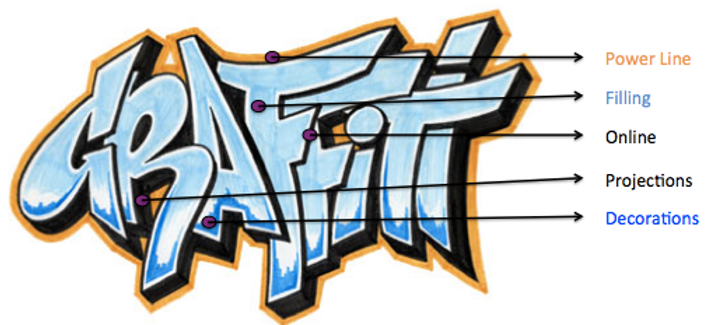
Graffiti are not simply words or letters done with spray-painting; they count with certain characteristics for them to be considered this way. They have their own structure which consist of an “online”, “power line”, “projections”, and a “filling or decorations” most of the time. If a graffiti does not count with them, then its simply not a graffiti or type of art, hence it can be considered vandalism. People often confuse graffiti and the art behind it with simple spray-painted letters.
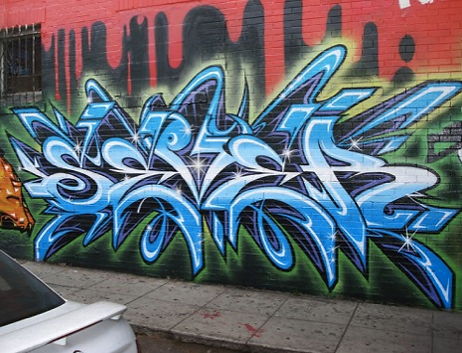
This is graffiti art

This is not
ATL skills:
-
Communicate ideas effectively to multiple audiences using a variety of media and format.
-
Identify problems and develop aims, goals and objectives.
-
Develop awareness of the process of effective learning.
-
Make intuitive judgments.
-
Utilize appropriate multimedia technology to create effective presentation and representation.
-
Access information to be informed and inform others.
Tags and pseudonyms:
Tag: "A label attached to someone or something for the purpose of identification or to give other information."
Pseudonym: "A fictitious name, especially one used by an author."
-Oxford Dictionary
Tags and pseudonyms are really important for graffiti artists, since it's basically a way for showing themselves to the world and having their personalized signatures. A tag is a basic writing of an artist’s name in a simple hand style. Usually these artists use pseudonyms instead of their real names, which is another name assumed for this particular purpose. Pseudonyms regularly have a special meaning or message for the person who uses it, or there is some kind of story behind it. Tagging is a graffiti style as well (the most common one), and since the artworks can be done in unauthorized places this is a way for keeping their real identities hidden as well.
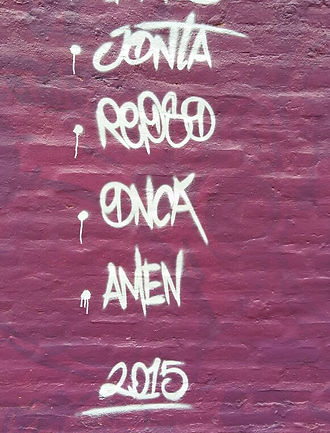
ATL skills:
-
Consider personal relationships to people, ideas and concepts.
-
Make intuitive judgments.
-
Keep an organized and logical system of information files.
-
Identify different points of view.
-
Underline ways in which images and language interact to convey ideas, values, and beliefs.
-
Use and interpret a range of content-specific terminology.
-
Consider, respect, and analyze different opinions, points of views, ideas and preferences.
Bibliography:
-
Graffiti tag. (n.d.). Retrieved March 21, 2015, from http://en.wikipedia.org/wiki/Graffiti#Tag
-
Pseudonym. (n.d.). Retrieved March 21, 2015, from http://en.wikipedia.org/wiki/Pseudonym
What is urban art?
Urban art (or street art) is an art style that is related to cities and city life. This term gained popularity at the end of the 20th century and it was used by the art establishment for referring to art and artists who were involved in street and graffiti arts. Urban art began as graffiti, which was basically spray-painting on buildings, bridges, and other structures, leading it to be considered as vandalism by many people. Since urban art is done in public spaces it was seen as a bad thing, destruction of private property and tagging of territory. However nowadays it is seen as a way of expression and although it’s true it can sometimes lead to vandalism, the urban artists do not see themselves as vandals. From its humble and controversial beginnings, urban art has now started to become a form of art that uses a great variety of media and goes from simple graffiti to huge murals and sculptures in public spaces. Today it is usually done by artists who are passionate about city life and it's associated with the people who live and experience it.
Urban: "In, relating to, or characteristic of a town or city."
Art: "The expression or application of human creative skill and imagination, typically in a visual form such as painting or sculpture, producing works to be appreciated primarily for their beauty or emotional power."
-Oxford Dictionary
Street art characteristics



-
A visual art
-
Created in public locations
-
Usually unsanctioned
-
Frequently done without authorisation
-
Done outside of the context of traditional art settings
-
The term can include traditional graffiti art work, as well as other techniques
ATL skills:
-
Collect research from a variety of print and digital sources. I applied this by investigating what urban art is, defining it, and giving a general context based on the variety of sources I consulted.
-
Utilize different media to obtain different perspectives. I applied this by searching the different perspectives people have from urban art, and how it could be considered vandalism or art.
-
Use familiar learning skills with unfamiliar content. I defined the words themselves, searched a little of its history, and the perspectives that exist, which were learning skills I had but in this unfamiliar topic.
-
Break down large concepts and projects into component parts and combine parts logically as appropriate. I applied this by resuming all the information I gathered into the simple characteristics street art has, and connected this to the other information.
-
Access information to be informed and inform others.
-
Find information in different media.
Bibliography:
-
Urban art. (n.d.). Retrieved November 4, 2014, from http://en.wikipedia.org/wiki/Urban_art
-
Osnat, T. (n.d.). What is Urban Art. Retrieved November 4, 2014, from http://www.osnatfineart.com/articles/urban-art.php
-
Urban Art in terms from the artzine on artrepublic.com. (n.d.). Retrieved November 5, 2014, from http://www.artrepublic.com/art_terms/11-urban-art.html
-
Voight, J., & Wiley, M. (n.d.). What Is Urban Art? Retrieved November 6, 2014, from http://www.wisegeek.com/what-is-urban-art.html
Evaluating sources:
The sources I used for defining urban art, explaining it in my own words, and then giving its characteristics are mostly reliable. Although there was information from Wikipedia and this isn’t accurate, it was checked to be true with the other webpages. In addition some people like Osnat Tzadok who is an artist is a good source, as well as Jennifer Voight and artrepublic (which is art dedicated website).
Probably graffiti is one of the most common, famous, and important types of street art, but...

What is graffiti exactly?
1. "Writing or drawings scribbled, scratched, or sprayed illicitly on a wall or other surface in a public place."
-Oxford Dictionary
2. "Words or drawings, especially humorous, rude, or political, on walls, doors, etc. in public places."
-Cambridge Dictionary
3. "Drawings or inscriptions made on a wall or other surface, usually so as to be seen by the public."
- The Free Dictionary
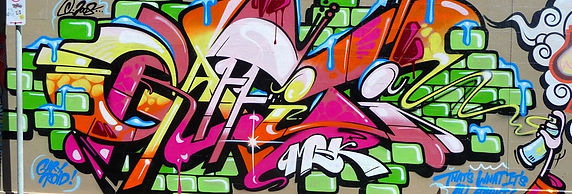
Although the word graffiti is actually a plural noun in Italian (the singular would be graffito), it is mainly used as a singular noun in English. A graffiti can simply be defined as a drawing or writing which has been scribbled, scratched, or sprayed on a surface, commonly in public and urban places like walls. However these free paintings are mostly done illicitly and can range from just written words to really elaborate paintings. Some examples are spray-painted words, symbols, and images that can contain statements or artistic expressions. Its origin comes from ancient times, with examples back in Egypt, Greece and the Roman Empire. Today graffiti are quite controversial since they affect public properties permanently in the name of art. Opinions towards this are divided and while some people consider it to be vandalism others support it and highlight the quality that they have. Since gangs can also use them as tagging this can be the most popular form of graffiti, but graffiti are much more than that and people tend to forget they can also be colourful murals with important messages.
ATL skills:
-
Keep an organized and logical system of information files/notebooks.
-
Communicate ideas effectively to multiple audiences using a variety of media and format.
-
Read a variety of sources for information and for Pleasure.
-
Make connections between a variety of sources.
-
Identify different points of view.
-
Utilize different media to obtain different perspectives.
Bibliography:
-
Graffiti. (n.d.). Retrieved November 14, 2015, from http://en.wikipedia.org/wiki/Graffiti
-
Graffiti. (n.d.). Retrieved November 14, 2015, from http://www.thefreedictionary.com/graffiti
-
Voight, J., & Wiley, M. (n.d.). What Is Urban Art? Retrieved November 15, 2014, from http://www.wisegeek.com/what-is-urban-art.html
-
Graffiti: Art through Vandalism. (n.d.). Retrieved November 15, 2015, from http://iml.jou.ufl.edu/projects/fall07/Sanchez/art.html
Graffiti in Hip hop culture:
Hip-hop culture could be defined as a cultural movement for self-expression. It was formed during the 70s among African American teens in New York City. It consists of 4 basic elements that are rap music, turntablism (also known as DJing), breakdancing or b-boying, and graffiti art. However, Hip-hop is more than art or entertainment and these elements are just used for expressing a deeper meaning.


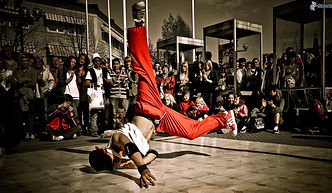
ATL skills:
-
Structure information appropriately in written, oral and visual work.
-
Collect and verify data.
-
Playing with ideas and experimenting.
-
Make intuitive judgments.
-
Make connections between random things.
-
Access information to be informed and inform others.
-
Respect and accept sociocultural difference.
Bibliography:
-
Hip hop. (n.d.). Retrieved November 26, 2014, from http://en.wikipedia.org/wiki/Hip_hop
-
What is Hip Hop Culture? (n.d.). Retrieved November 26, 2014, from http://globalawarenessthroughhiphopculture.com/Defining_Hip_Hop_Culture.html
People can confuse or mix the ideas of graffiti and murals, but it is important to know the difference, so...
What is a mural?
1. "A painting or other work of art executed directly on a wall."
-Oxford dictionary
2. "A large picture that has been painted on the wall of a room or building."
-Cambridge dictionary
3. "(Art Terms) a large painting or picture on a wall or ceiling."
-The free dictionary

A mural is any piece of art, which has been painted or applied directly on a wall, ceiling, floor or some other large surface that is permanent. Murals can be done by using many different styles, but all of them are made to bring beauty to the inside or outside of buildings, or in any place in which they are done. For example many big cities can have murals along freeway sound barriers or tunnels. In addition, there might also be murals on the side of buildings in downtowns, or companies can use them outdoors to seem brighter and more colourful while they distract people’s eyes from industrial machinery. Although people are mostly likely to be familiar with outdoor murals, there are also tons indoor ones like Michelangelo’s famous artwork inside of the Sistine Chapel. Today, indoor murals are often used to decorate rooms and for making them more artistic. A mural can be inspired in various things and give life to a simple wall.
Murals vs. Graffiti
A mural is any piece of art, which has been painted or applied directly on a wall, ceiling, floor or some other large surface that is permanent. Murals can be done by using many different styles, but all of them are made to bring beauty to the inside or outside of buildings, or in any place in which they are done. For example many big cities can have murals along freeway sound barriers or tunnels. In addition, there might also be murals on the side of buildings in downtowns, or companies can use them outdoors to seem brighter and more colourful while they distract people’s eyes from industrial machinery. Although people are mostly likely to be familiar with outdoor murals, there are also tons indoor ones like Michelangelo’s famous artwork inside of the Sistine Chapel. Today, indoor murals are often used to decorate rooms and for making them more artistic. A mural can be inspired in various things and give life to a simple wall.
Graffiti-style interior murals
Recently, graffiti and street art have also played a very important role in contemporary wall painting and have influenced the creation of interior murals. Graffiti and street artists such as Keith Haring and Shepard Fairey (among many others) have magnificently brought their street art style from urban walls onto walls of private and important clients. As graffiti became more common during the late 90s, brands with young targeted audience such as Nike and Red Bull have used street artists to decorate the walls of their corresponding offices. This tendency kept going through 2000's with urban art achieving more appreciation from art institutions globally.
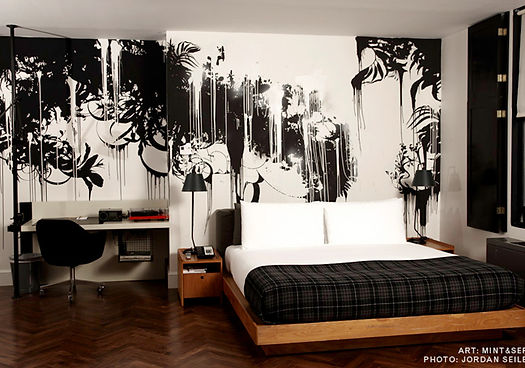
ATL skills:
-
Collect research from a variety of print and digital sources.
-
Structure information appropriately in written, oral and visual work.
-
Make connections between a variety of sources.
-
Make connections between random things.
-
Make connections between learning gained in different subject areas.
-
Find information in different media.
Bibliography:
-
Mural. (n.d.). Retrieved November 28, 2014, from http://www.thefreedictionary.com/mural
-
Kayne, R., & Foster, N. (n.d.). What Is a Mural? Retrieved April November 28, 2014, from http://www.wisegeek.com/what-is-a-mural.htm
-
The difference between graffiti and murals. (2013, July 25). Retrieved November 30, 2014, from http://www.grassroutestravel.com/the-difference-between-graffiti-and-murals/
FACTS
-
The word graffiti comes from the Greek word ‘graphein’ which means ‘to write’. Graffiti was first found on ancient Roman architecture, although back in then there was no such thing as spray paint, they carved images.
-
Spray cans used for creating graffiti have different nozzles for different coverage.
-
The Longest Graffiti Scroll was created in Pakistan on the 3rd March 2012 and it measured 1,924 metres in length, and took 274 people to complete. This is an official record and can be found in the Guinness World Record.
-
Graffiti artists who are new or inexperienced to an area are known as ‘toys’.
-
Most graffiti artists prefer to be called ‘writers’ and each have their own ‘tag’. Artists who are into graffiti have a desire for public recognition and want to see their work around town, this is why each artists tag is different.
-
Tagging is a term used in the graffiti. It is usually created by writing of the name of the artist. It can be made by using marker or even spray paint.
-
One of the famous forms of graffiti is wild style. It is created y using the connecting point, arrow and interlocking letters.
-
You will usually need from 8 hours to 2 days to create a good image.
-
Graffiti has been used a lot by people living in a poor areas to make them look nicer
-
Graffiti can be very artistic and colourful or as simple as writing your name in black paint.
-
Graffiti is popular and can be seen in many museums and art galleries, although in many countries it is still illegal and you could be fined. It is illegal in most countries without getting the property owner’s permission first.
-
The materials used to create graffiti on the wall can come in the form of markers or even spray paint.
-
Many graffiti artist use this form or art as a tool to communicate their political and social message. You can find the wonderful graffiti on the art exhibition and galleries.
-
Many people have negative stereotype of graffiti because they often see the images on some public properties such as the building, bus stop, playground and train.


ATL skills:
-
Access information to be informed and inform others.
-
Locate, organize, analyze, evaluate, synthesize and efficiently use information from a variety of sources and media.
-
Find and select information via different media.
-
Break down large concepts and projects into component parts and combine parts logically as appropriate.
-
Evaluate solutions to problems.
-
Make connections between a variety of sources.
Bibliography:
-
Ward, L. (2009, October 12). Fun Facts About Graffiti | The Fact Site. December 8, 2014, from http://www.thefactsite.com/2009/10/facts-about-graffiti.html
-
10 Interesting Graffiti Facts. (2014, March 1). Retrieved December 8, 2014, from http://www.myinterestingfacts.com/graffiti-facts/


